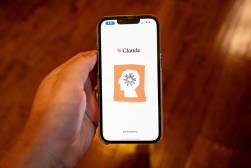The evolution of educational publishing: Does OER have a quality problem?
Over the past few months, more than 1.5 million students have graduated from colleges in the U.S., the majority of whom have relied on student loans to get through school. As student debt mounts in the trillions and continues to rise, students are looking to save money in any way possible, even beyond tuition.
Just recently, students at the University of Michigan crowdsourced a Google Doc to share tips for making college more affordable — with several pages dedicated to alternatives to purchasing textbooks . In fact, a recent study even found that 65 percent of students decided against buying a textbook because it was too expensive, even though they knew it would harm their grades.
In an effort to provide students with more affordable class materials, educators are exploring alternatives to pricey physical textbooks or online course companions — the most popular solution being open educational resources (OER).
OER gaining credibility … slowly
OER is often cited as a viable alternative to expensive textbooks — and it’s still one of the most promising solutions to the problem of expensive educational materials. However, there are still many barriers to widespread adoption. A primary hurdle is that many professors are still skeptical of using free online content because they’re concerned about whether it’s of high quality. Additionally, OER often takes the form of static PDFs, which can be difficult to find online, it’s challenging to customize for a specific course, and it lacks the feedback mechanism needed to ensure quality and share with the education community.
The OER movement continues to be fueled by a passionate community of educators who are committed to finding solutions to these challenges, and it’s starting to gain momentum in higher education. On the question of access, nonprofits such as OpenStax and OER Commons are helping to make these materials more widely available and easy to find; and some big publishers are sharing OER on their platforms (though they’re making it available for a cost to access this “free” content).
What’s more, OER advocates recently came together to create a framework to encourage responsible stewardship. Known as the CARE framework , it serves as a guideline to foster a productive and sustainable open education ecosystem. These efforts are a step in the right direction, but in order for OER to gain the same traction as the traditional textbook, the question remains: How can we ensure OER is consistently high quality at scale?
A peer-review process for the digital age
The answer (or part of it, at least) may already exist in academia: the peer-review process. For almost 300 years, this approach has been one of the main ways quality has been maintained in scholarly publishing, helping to validate research and increase networking possibilities within academic communities. What if we could replicate this general approach for a digital generation to address OER quality? Better yet, what if we could improve upon it by leveraging the network effects of the internet (meaning the more people who participate, the more value the product provides)?
A “community model” for peer review, powered by a network of university educators, could allow professors to share and collaborate in real-time, review work, offer edits to one another, no matter where they are located. The content would essentially become a living document that gets better in near real-time as more people iterate on it.
Comparable to a Wikipedia site crowdsourced by the world’s leading scholars and experts, this model would include safeguards (as with any peer review) to ensure the quality and integrity of the content. The quick pace of a digital peer-review design sharply contrasts the traditional publishing model, where a textbook takes on average five years to be created and is often outdated the minute it’s published. With proper attribution, authors may feel more accountable for their work, too.
The right engagement tools for classroom innovators
It’s important to remember that OER and educational content, in general, should always serve a greater purpose of helping professors engage students and improve learning outcomes (unlike a scholarly journal article or even a Wikipedia page that’s meant to merely inform). Therefore, the goal of a digital-first peer-review process shouldn’t be just to ensure factual accuracy, but also to account for how this content can be best used in a teaching environment. And who better to do that than educators themselves?
By leveraging the full might of the teaching community, this model would empower educators to more easily customize and curate content for their courses, based on what they know works or doesn’t work. Innovative and creative professors shouldn’t have to wait for an opportunity with a big publisher to share their insight with peers and students. And with the right digital tools, we can even take it a step further and help educators create interactive content that better engages today’s students.
Traditionally, OER have taken the form of disjointed and static PDFs from textbooks, providing limited value to today’s digitally native students, who learn differently than in the past. Technology plays a much larger role in their education. Think about how we all acquire new information in our personal lives. Mobile devices, for instance, allow us to have access to information whenever we want it. Why should students expect anything less from their course materials?
The format and delivery of open materials, therefore, matter. We need to use more multimedia content, which is interactive and can be accessed from a variety of digital devices, and engaging activities and open-ended questions that stimulate critical thinking as students prepare for class. Educators can gauge a student’s comprehension throughout a reading assignment by embedding questions and prompts. Not only does this help engage the student as they complete the assignment, but it also indicates to educators where the student may need support.
Cracking the affordability challenge
As another crop of high school graduates prepare to head off to college in the fall, universities are facing increased pressure to find ways to bring down educational costs. With recent legislation (both at the state and federal level), OER will be a crucial part of the solution, making the question of quality even more imperative. A peer-review process, powered by a community of educators, can help improve the quality of OER in a meaningful way. Beyond this, it can even improve the experience and quality of teaching, enabling professors to share insight with each other, and inspire learning in new and unexpected ways.
Mike Silagadze is the co-founder and CEO of Top Hat , an edtech company founded in 2009.




